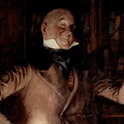The recent revelation that police forces now require officers to declare the names of any journalists with whom they are in touch as part of “counter-corruption guidance” was greeted with much dismay.
Rebecca Camber, the Daily Mail’s crime editor and chair of the Crime Reporters Association (CRA), suggested that this “equates the profession of journalism with criminals, extremists, suspects and sex workers… Forcing police officers to list association with journalists will have a chilling effect on police-press relations, discouraging whistleblowers from speaking out and deterring officers from having legitimate, essential contact with the media.” The Society of Editors agreed and Index on Censorship’s chief executive, Ruth Smeeth, was critical of “the seemingly growing perception within the British police that journalists are seen as unsavoury or potentially disreputable individuals for officers to associate with.” The College of Policing, which issued the guidance, has responded by saying that it “will listen very carefully to any issues raised by the media.”
It all seems a very far cry from the days in 1973 when a new commissioner of the Metropolitan Police, Robert Mark, issued a memorandum which noted that “relations with the news media are not as good as they could be” and suggested that in future officers of all ranks should feel free to supply the media with information. “Officers who act and speak in good faith,” he wrote, “may be assured of my support even if they make errors of judgment when deciding what information to disclose.”
The newly uncovered guidance and the responses have highlighted the increasingly strained relationship between police and crime reporters which reached its lowest ebb a decade ago, in the wake of the News of the World hacking scandal. Then, as a damage-limitation exercise, the paper’s owner, News International, shamefully handed over to the police millions of emails which revealed the contacts and sources of many of its journalists, some of whom were later investigated, arrested, charged and jailed. The well was poisoned. This new row coincides with the publication this summer of the book Crime and Investigative Reporting in the UK by Marianne Colbran, an academic at the London School of Economics who was previously a scriptwriter for The Bill.
Her contention is that traditional forms of crime reporting and the attendant relationships with the police are dying out, partly as a result of the after-effects of the hacking furore, the subsequent Leveson Inquiry and the 2012 report on police-media relations produced by Elizabeth Filkin and commissioned by the then home secretary, Theresa May. The Filkin report warned officers to watch out for “late-night carousing, long sessions, yet another bottle of wine at lunch—these are long-standing media tactics to get you to spill the beans.”
Inevitably relations between police and reporters have changed since the cosy days in the 1950s, when all crime reporters were male and white and when the CRA’s president, Percy Hoskins of the Daily Express, could say that the association was “a group of professional journalists who are to Scotland Yard what the lobby journalists are to the House of Commons—an elite body who can be trusted with confidential information to mutual advantage.” It was that “mutual advantage” that became the problem during the high days of police corruption in the 1960s and the 1970s, and there is no desire to return to that symbiotic relationship between the “elite” and the Old Bill. But effectively there are now three issues to be addressed: journalists not trusting the police, the police not trusting journalists, and the public often not trusting either.
We are in a strange period for the coverage of crime. On the one hand there is an apparently insatiable appetite for “true crime” in terms of television programmes and podcasts, reflecting the old fascination that Carl Jung noted in Archetypes and the Collective Unconscious: “With what pleasure we read newspaper reports of crime! A true criminal becomes a popular figure because he unburdens in no small degree the consciences of his fellow men, for now they know once more where evil is to be found.” On the other hand, parts of the crime beat have been ravaged. The Cairncross Review into journalism, carried out by former journalist Frances Cairncross and her team and published in 2019, found that the coverage of criminal trials had declined dramatically. The review quoted a study that, in the four years from 2012 to 2016, court reporting had dropped by 30 per cent in the national press and by 40 per cent in regional newspapers. This process is continuing apace. Locally and nationally the UK public is now largely unaware of how and why so many people—the highest per capita proportion in western Europe—are punished and jailed.
While once most national newspapers had full-time correspondents covering the major trials, now none have; only London’s Evening Standard still has a dedicated courts correspondent. These reporters have all but disappeared, like the labour correspondents who once covered industrial disputes. A few diligent and hard-pressed agency reporters are left to fill the gaps; when you see a newspaper byline about a court case that gives a reporter’s name with the addition “and agencies,” you can be fairly certain it was the uncredited agency reporter who did most of the heavy lifting.
Coverage of the local magistrates or sheriff courts was once the bread-and-butter of local newspapers, but this is no longer the case. Colbran notes this and argues that “with the closing of many local news outlets over the last 20 years, journalists are often reporting at some distance from the communities they are covering and that contributes, in turn, to a disconnect between journalists and their public, leading to superficial reporting at best and harmful reporting at worst.”
Crime reporters have all but disappeared, like the labour correspondents who once covered industrial disputes
The idea that crime reporting can be “harmful” is central to another, new challenge facing crime journalism in the United States. Colbran refers to the “Defund the crime beat” initiative that sprang out of the “Defund the police” movement, which itself evolved after the death of George Floyd at the hands of the police in 2020. An article by Tauhid Chappell and Mike Rispoli, published by the Nieman Lab (attached to the Nieman Foundation for Journalism at Harvard University), argues: “Let’s be honest: crime coverage is terrible. It’s racist, classist, fear-based clickbait masking as journalism. It creates lasting harm for the communities that newsrooms are supposed to serve… This should be the year where we finally abolish the crime beat. Study after study shows how the media’s overemphasis on crime makes people feel less safe than they really are and negatively shapes public policy around the criminal-legal system.”
In a somewhat less radical piece, Joshua Benton of the Nieman Lab explained that the Boston Globe and other papers were now offering people whose criminal convictions had appeared in the paper—and could easily be found on the paper’s website—a chance to have the slate wiped clean. He suggested that “mainstream journalism has had a lot to think about… Are newspaper websites the mythical ‘permanent record’ where all your misdeeds would be recorded for eternity?”
Colbran argues that “there may be some cause for optimism for critics of the content of crime news.” She points to “the new start-ups”—particularly the Bureau for Investigative Journalism, its community-focused network called the Bureau Local and also the Bristol Cable—which “may be succeeding in gradually ‘repairing’… and, in particular, reducing representational harms by widening the media frame in their reporting of vulnerable communities.”
Certainly the arrival of organisations like the Bureau for Investigative Journalism and Bellingcat, the investigative journalism group founded by Eliot Higgins which focuses on online investigations using open-source data, are important. And at Vice, Max Daly, the global drugs editor, consistently provides some of the best coverage of the subject available anywhere. Local start-ups that cover aspects of crime are also to be welcomed. But in fact there have always been outlying publications, both national and local, covering aspects of crime ignored or under-reported by the mainstream.
For instance, Private Eye, since its inception in 1961 and through the period when the late Paul Foot was leading the charge to the present day, has run campaigns and exposed scandals within the police and the justice system. Back in the days when the local “alternative press” flourished it was the Rochdale Alternative Paper (RAP) that in 1979 helped to expose Liberal MP Cyril Smith’s child abuse while the national media looked the other way. In the 1970s and 1980s it was Rebecca, edited by the campaigning journalist Paddy French, that covered police malpractice in Wales. In the same period, it was the underground paper International Times that had the most informative coverage of illegal drugs written under the pen name of “Maybelle.” Inside Time, the prisoners’ newspaper, which was founded in 1990 and is currently edited by Erwin James, Noel “Razor” Smith and Rachel Billington, usually has at least a couple of stories which should have made it into the national media and some that do.
Crime is very much on the agenda now and there is no shortage of reasons why national crime correspondents are still busy and engaged. From the killing of nine-year-old Olivia Pratt-Korbel in a suspected gangland feud in Liverpool to the crisis at the Metropolitan police which led to the departure this year of the commissioner, Cressida Dick, to the new prime minister’s laughably silly suggestion that police forces should be set targets of reducing murders by 20 per cent, to the arrests of republican protesters in the run-up to the Queen’s funeral, there are countless stories that demand investigation. So what better way would there be for the College of Policing to respond to the current dispute than adopt Robert Mark’s memorandum from half a century ago, and encourage all officers henceforth to speak “in good faith” to journalists?













